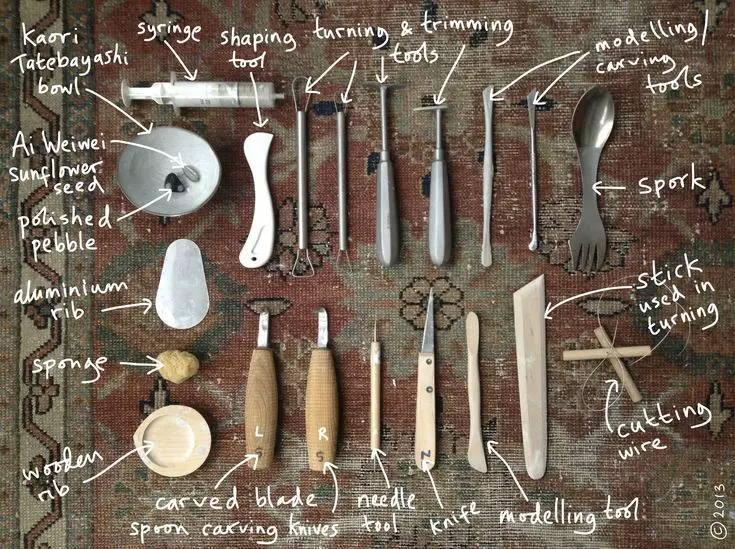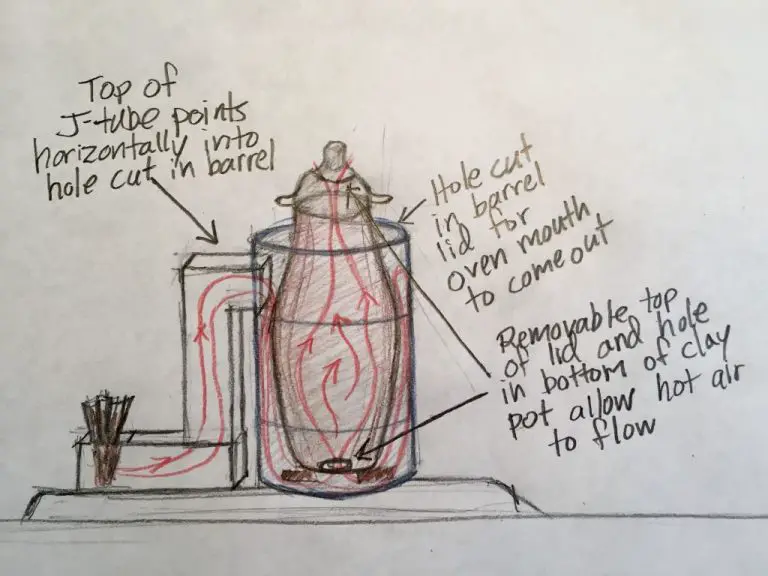Were Canopic Jars Made Of Clay?
Canopic jars were special funerary containers used in Ancient Egypt during the mummification process. They held the preserved internal organs of the deceased which were removed from the body during mummification.
The ancient Egyptians believed that the preservation of the body and its internal organs was essential for passage into the afterlife. The organs removed were the lungs, liver, stomach, and intestines. Each organ was individually wrapped and stored in its own canopic jar.
The jars served as a repository for these organs while allowing them to be kept close to the mummified body. Their design evolved over time but always maintained religious symbolic meaning about protection and rebirth into the next world.
Canopic jars were an integral part of the mummification ritual and Egyptian concept of eternal life. Placing them in the tomb near the sarcophagus was an important step to ensure the deceased was properly preserved and equipped for their journey into the afterlife.
Materials Used
Canopic jars were an important part of the ancient Egyptian burial process and were used to store the internal organs of the deceased. They date back to the early Old Kingdom and were used throughout most of ancient Egyptian history. Canopic jars were made from a variety of materials over the thousands of years they were used.
In the Old Kingdom, canopic jars were often made of limestone, calcite (Egyptian alabaster), slate and clay. Clay, or ceramic, was one of the most common materials used to manufacture canopic jars throughout ancient Egypt. The clay came from the fertile Nile river banks which provided high quality potter’s clay. Ceramic canopic jars were made using pottery techniques including modeling, coil building, throwing on a wheel and molding.
Clay Canopic Jars
Canopic jars were predominantly made from clay, which was an abundant and versatile material in Ancient Egypt. The specific type of clay used varied, but Nile silt clay was commonly used due to its accessibility along the Nile River valley where the ancient Egyptians resided. This clay had natural properties that made it ideal for constructing canopic jars.
The clay was dense, durable, and could be molded into delicate shapes while still being sturdy enough for long term storage. Fired clay was also less porous than other materials like wood or reed, helping preserve the organs within the canopic jars. The clay’s natural ivory color provided an ideal neutral backdrop which artisans could decorate with bright paints and glazes.
Clay was an optimal material as it could be shaped by hand or thrown on a potter’s wheel into precise jar forms. Clay allowed artisans to create slender necks, broad shoulders, flat bases, and intricate lid stoppers. The delicacy and level of detail possible would have been difficult to achieve in other materials available in ancient times. Overall, clay provided ancient Egyptians with a versatile, workable, and abundant material to craft the essential canopic jars.
Manufacturing Process
The ancient Egyptians were skilled artisans when it came to working with clay. To create canopic jars, they would start with natural clay deposits found along the Nile River. The clay was collected and refined to remove any rocks or debris.
Pottery wheels were often used to shape the jars. A lump of clay would be placed on the wheel and spun rapidly as the potter used their hands to form the shape. The speed of the spinning wheel allowed the potter to raise the walls of the jar efficiently. Once shaped, excess clay would be trimmed and smoothed.
The jars tended to have flat bottoms so they could sit upright. The necks were tall and slender with flared openings. Elaborately shaped lids were crafted to fit snugly in place. After forming the jar, decorative elements would be added by hand.
The clay needed time to dry to prevent cracking, so the jars were left in dry, shaded areas. Once dry, the jars were placed in a kiln and fired at high temperatures to permanently harden the clay through vitrification. This process transformed the soft, wet clay into a durable, ceramic material.
The firing technique allowed the Egyptians to create canopic jars that retained their shape and integrity for thousands of years. Their knowledge of working with clay produced vessels of incredible quality that were beautifully preserved despite their great antiquity.
Decorations
Clay canopic jars were often highly decorated, reflecting their significance in ancient Egyptian burial practices. Some of the common decorative elements found on these jars included:
Hieroglyphics and images of gods/goddesses: The name of the mummified organ stored inside was inscribed along with prayers and images of gods like Anubis, who oversaw mummification. This symbolized protection in the afterlife.
Painted designs: Vibrant colors like red, blue, yellow and green were used. Repeating geometric patterns and Egyptian motifs like the djed pillar, lotus flower, and scarab beetle adorned the jars.
Inlays: Materials like glass, precious stones or enamel were inlaid for an opulent finish. The sons of Ramses III had gold decorated jars.
Lids shaped as human/animal heads: The lids were carved and molded into the shape of the deceased’s head or the head of protective creatures like falcons or jackals. This depicted the safeguarding of the organs.
The intricate decorations beautified the jars while infusing them with symbolic meaning. As the final resting place for the preserved viscera, they honored the deceased while readying the organs for rebirth into the afterlife.
Stoppers
Canopic jars were sealed with unique lid stoppers, often carved to represent the heads of the four sons of Horus. The stoppers were an integral part of the jar design and were made to fit snugly into the mouth of each vessel.
The stoppers were commonly carved from stone materials like calcite or granite, matching the precious materials used for the jars themselves. The carvings depicted the distinctive animal heads associated with each son of Horus – Imsety, Duamutef, Qebehsenuef and Hapy. Imsety’s head was human, Duamutef’s was a jackal, Qebehsenuef’s was a falcon, and Hapy’s was a baboon.
These carved stoppers served both a functional and symbolic purpose. Practically, they sealed the vessel to protect the mummified organs inside. But they also reinforced the religious significance of the set of four canopic jars, associated with the four sons of Horus who protected the organs for the afterlife.
Sets of Four
Canopic jars were always created and used in sets of four, with each jar designated for a specific organ. This convention was remarkably consistent across ancient Egyptian history and geography. The four canopic jars in a set were used to separately store and preserve the liver, lungs, stomach, and intestines during the mummification process.
The 4 jars followed this order:
- The first jar with a human headed lid, called Imsety, stored the liver.
- The second jar with a baboon headed lid, called Hapy, stored the lungs.
- The third jar with a jackal headed lid, called Duamutef, stored the stomach.
- The fourth jar with a falcon headed lid, called Qebehsenuef, stored the intestines.
Having four distinct and specially decorated jars for each organ was an important part of ensuring the preservation of the body for its journey to the afterlife. The consistency of this four jar convention emphasizes the significance of the canopic jars in the mummification rituals.
Placement in Tombs
The ancient Egyptians placed great importance on preserving the bodies of the deceased so they could continue to exist in the afterlife. Canopic jars played a vital role in this process by protecting some of the most important internal organs removed during mummification.
The four canopic jars containing the embalmed liver, lungs, stomach, and intestines would be entombed alongside the mummy they belonged to. They were typically grouped together in a special chest placed within the tomb.
This canopic chest was stored in the burial chamber alongside the sarcophagus containing the mummified body. It would be located close to the mummy so the organs could be reunited with the deceased in the afterlife. The tomb’s layout was designed to aid the passage of the dead into the next world.
The placement of the canopic jars near the sarcophagus highlights their significance. The ancient Egyptians believed preserving the organs in the jars and reuniting them with the mummy was essential for a successful and eternal afterlife.
Later Use
Canopic jars experienced some changes in design and use over the centuries of Ancient Egyptian history. In the early periods, each of the four jars was topped with the head of a different protective deity – human, baboon, falcon, and jackal. Later on, the four heads were sometimes standardized to be four human heads or four falcon heads.
Another shift came in the Third Intermediate Period and Late Period of Ancient Egypt (1069-332 BCE) when the jars became mainly symbolic. Actual organs were no longer stored inside. The jars were still buried with the mummy, but often contained only substitutes like stones or onions. Some mummies from this time have been found with no canopic equipment at all.
By the Ptolemaic Period (305-30 BCE), the practice of canopic jars had died out completely, marking the end of a centuries-long Egyptian tradition. What had been an essential part of mummification for so long was finally discontinued. While canopic jars are strongly associated with Ancient Egypt today, they were only used for a portion of Egyptian history.
Significance
Canopic jars played a crucial role in the mummification process and afterlife beliefs of ancient Egyptians. As containers for the internal organs removed during mummification, they enabled preservation of the body for the afterlife journey. The four jars, each holding a different organ, were entombed alongside the mummy. This highlights their sacred status as objects necessary for rebirth in the next world.
The distinct human-headed jar design also reflects the importance of canopic jars. Carved with the protective image of the four sons of Horus, they were imbued with magical powers. The jars linked the deceased to the gods and offered divine protection of the organs. This sense of their spiritual purpose is a key to understanding how Egyptians viewed the afterlife.
Beyond mummification rituals, canopic jars became recognized cultural symbols of ancient Egypt. Their characteristic shape and lid designs make them easily identifiable artifacts of this civilization. Even today, canopic jars remain enduring icons representing the beliefs, funerary customs, and artistic skills of the ancient Egyptians.




